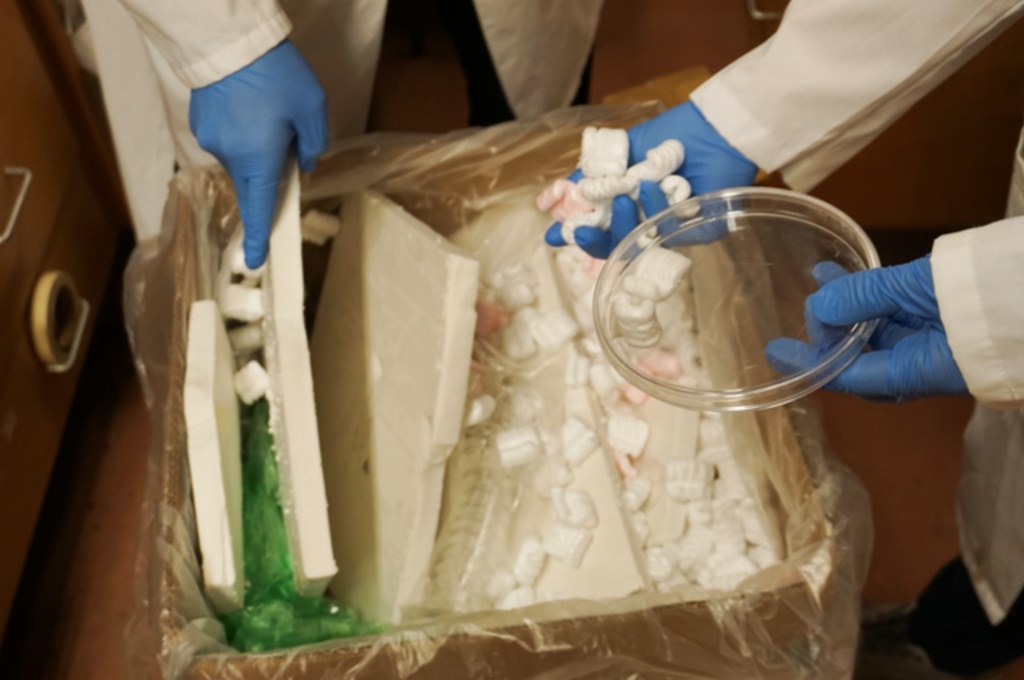
Polystyrene (Styrofoam) has been turned into a valuable chemical found in seaweed by exposing it to sunlight.
Broken down, it produces DPM (diphenylmethane,) a molecule in the aquatic plant used in drug development, polymer manufacturing, and even fragrances and other cosmetics.
Polystyrene is the indestructible plastic is found in everything from takeaway containers to TV packaging.
It’s rarely recycled due to costly and complex processes required, as well as the difficulty of collecting it.
Now scientists have broken it down using a simple and inexpensive technique that combines UV (ultraviolet) rays and a chemical catalyst.
Market incentive is baked into the process, since the market price for DPM is 10-times higher than other materials currently made from polystyrene. Other valuable chemicals produced included benzophenone, used for clear coatings in the printing and film industry, and 4-oxo-4-phenyl-butyric acid.
“Many municipal recycling facilities instruct residents not to put polystyrene in their home recycling bins,” explains lead author Professor Greg Liu, of Virginia Tech. “Currently, the main method for recycling polystyrene yields a product that is often too low-quality to make the process economically viable.”
“In other words, if a recycling plant tries to recycle polystyrene on a large scale, it will either need a financial boost, such as a government subsidy, or the operation risks running out of money and shutting down.”
The VA Tech team published a study in PNAS that demonstrated their technology, but also included economic viability findings through consulting business experts from Santa Clara University in California and Dongbei University in China.
Around 1.15 billion polystyrene food and drink containers were sold in England in 2018, according to the Department for Environment, Food and Rural Affairs.
Unlike most plastics, polystyrene can remain intact for over 1,000 years, and its presence in the environment has been linked to diseases, including some cancers.
However when exposed to UV light it weakens. The researchers showed sunlight degrades polystyrene chemically. While this brings up the possibility of recycling methods, it also means that floating in the oceans, it will break apart into microplastics, causing a different sort of damage.
Sales of single-use polystyrene food containers have been banned in Scotland for just this reason.
“Many of us are comfortable tossing a metal can or a glass jar into the recycling bin without a second thought,” said Professor Liu. “Not every recycling plant is equipped to handle every type of plastic. That’s because the chemistry and structure of plastic materials are diverse, and each type requires a specific recycling procedure.”
“We at Virginia Tech can contribute a small piece to the big puzzle and offer solutions to positively impact the world.”
BREAKDOWN This Good News To Your Friends On Social Media



















